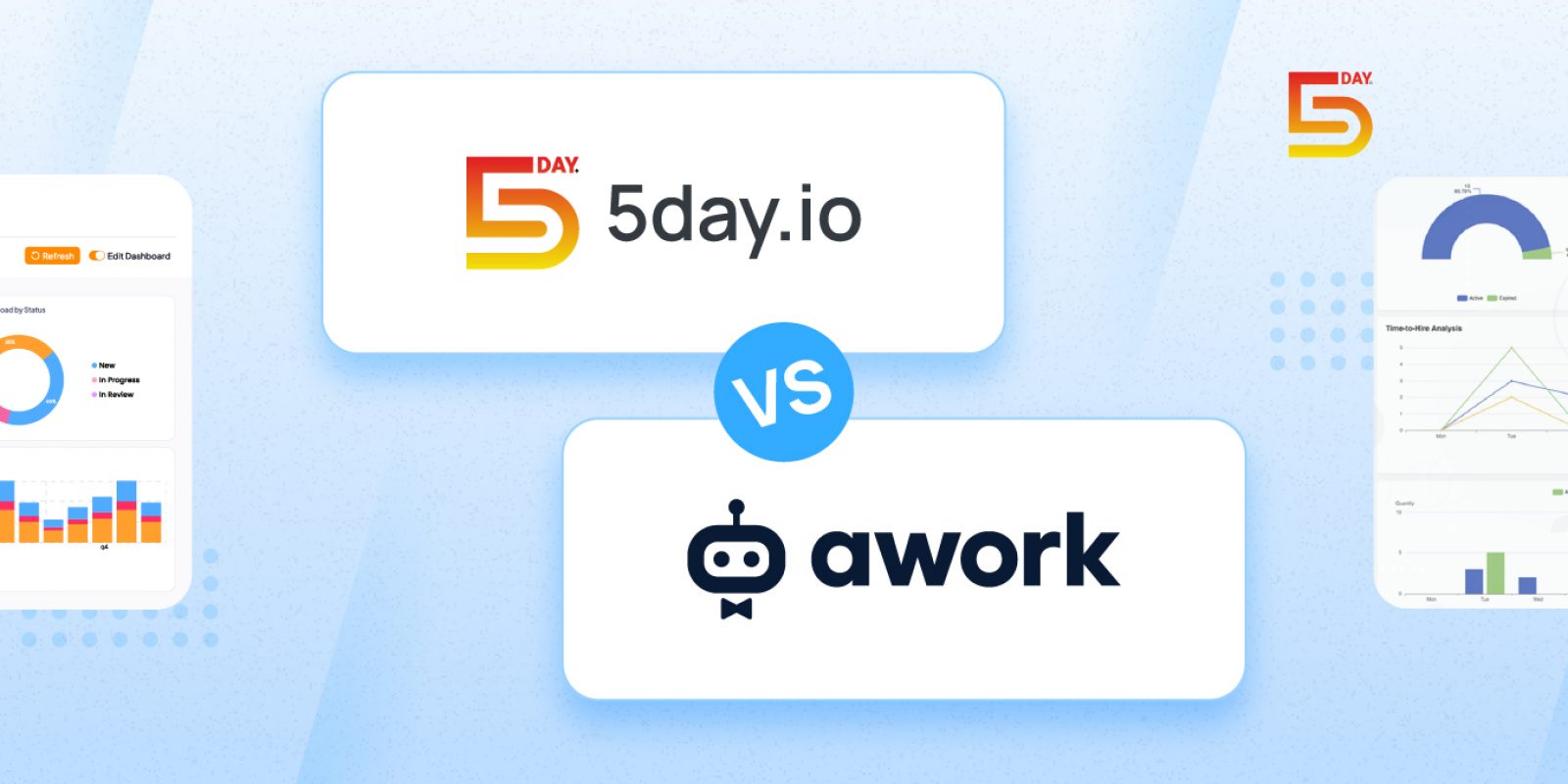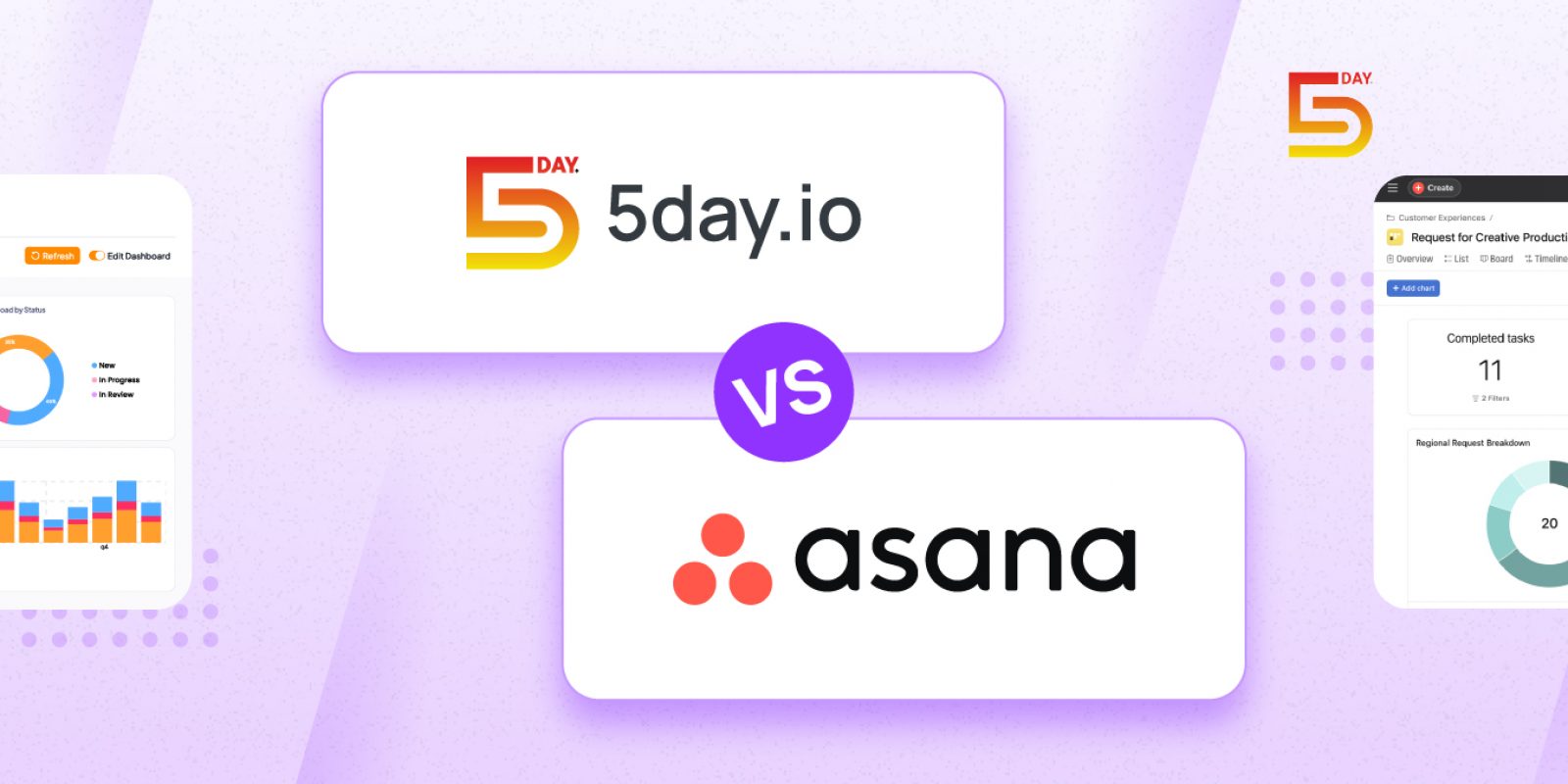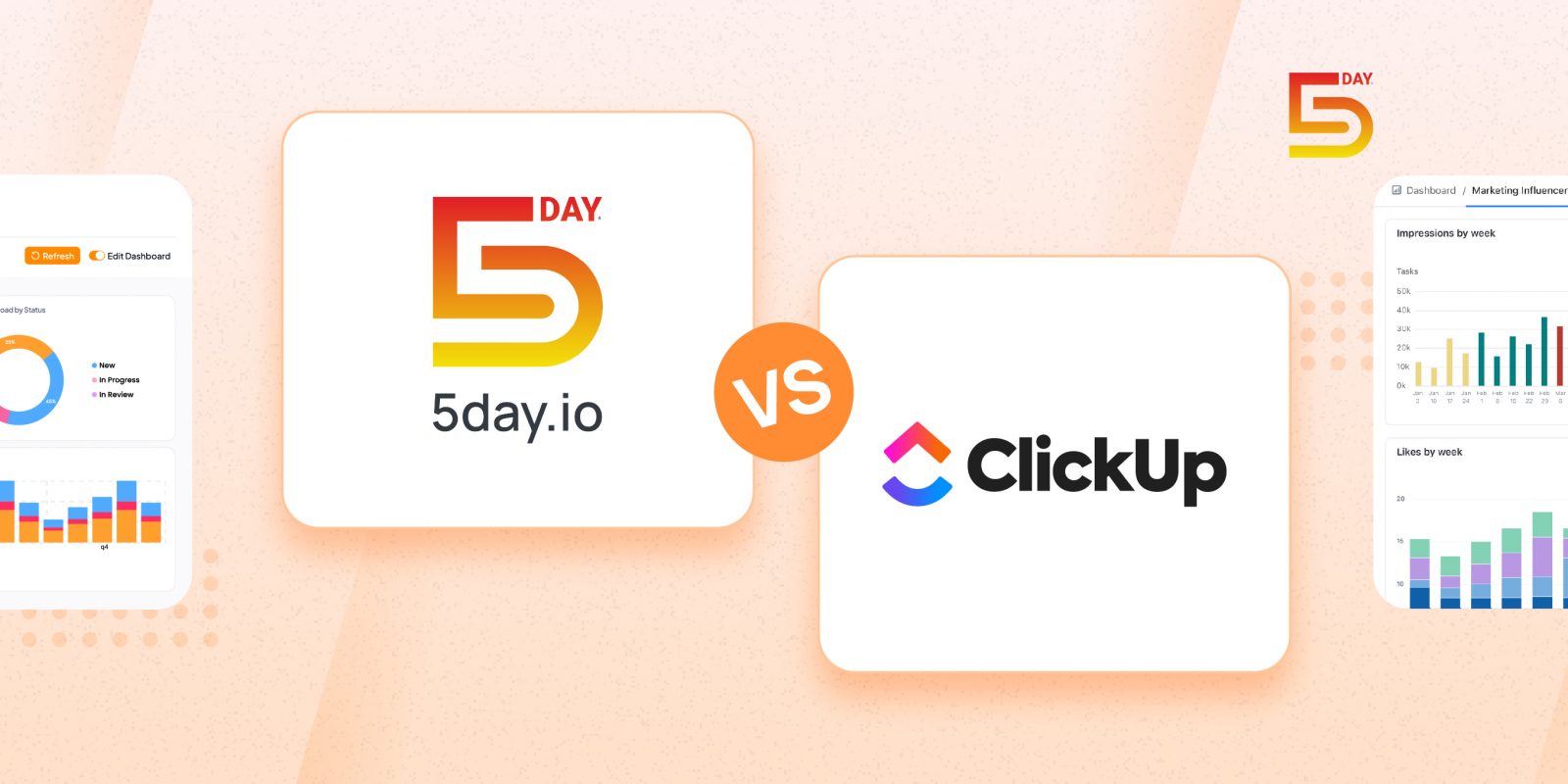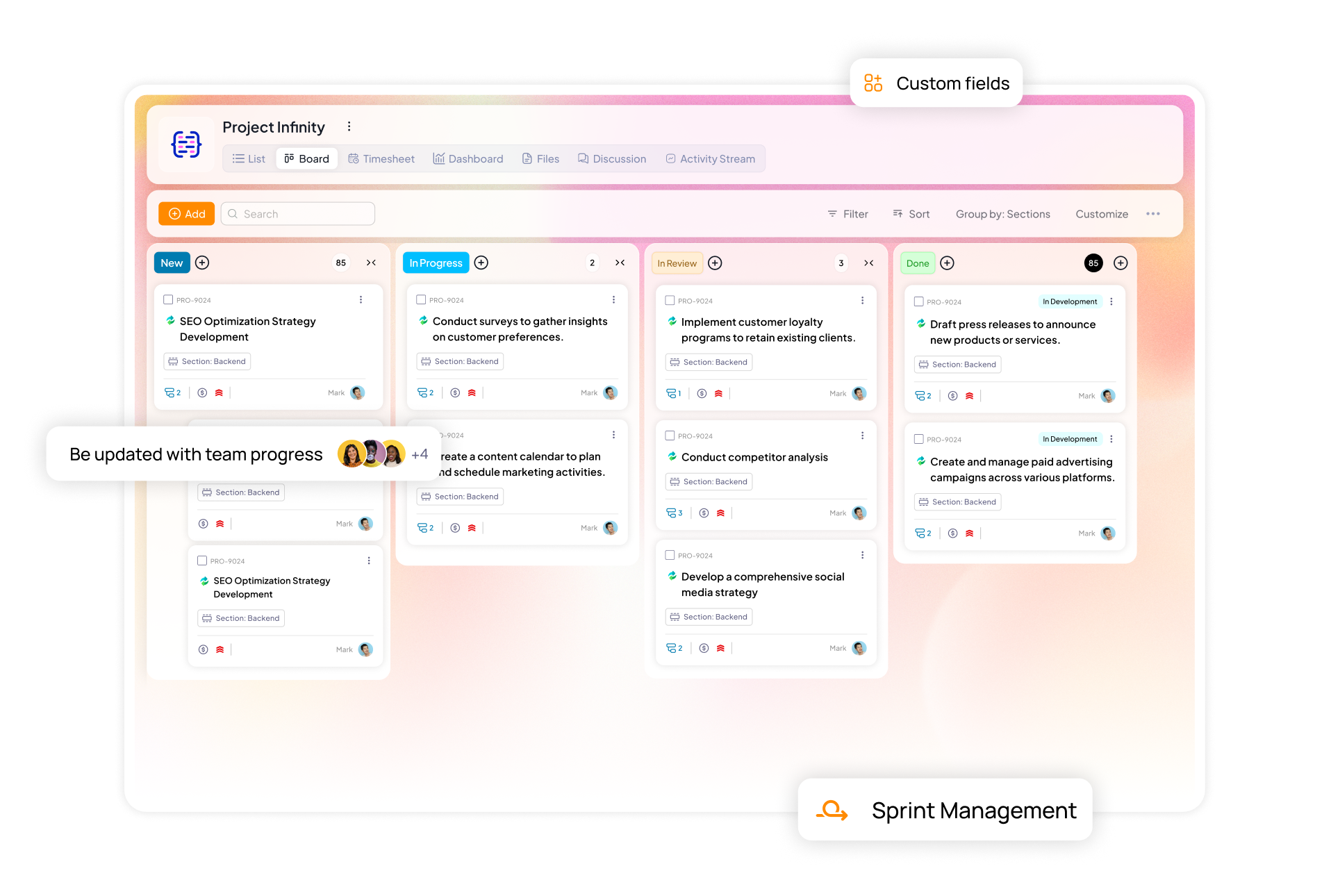Awork and 5day.io represent two completely different philosophies of how teams should work.
Awork believes in structure and carefully designed systems. It’s beautiful, and reassuring in the way a perfectly organized control room is reassuring.
5day.io believes in clarity, speed, and getting out of the team’s way. It’s simple and built around how modern teams work when no one is watching.
Both are excellent tools, but they solve very different problems.
This comparison is about which one matches the heartbeat of your team.
If your team thrives on structure, Awork will feel like home. If your team thrives on momentum, 5day.io will feel like a breath of fresh air.
Let’s explore the 5day.io vs Awork battle.
Quick Verdict (For Readers in a Hurry)
Quick Verdict | Awork | 5day.io |
Core identity | Stylish, structured project management tool with classic hierarchy. | Radically simple, clarity-driven platform built for speed and peace of mind. |
Best for | Teams that want control, organization, and traditional PM structure. | Teams that prioritize speed, clarity, and minimal configuration. |
Strengths | Polished UI, strong hierarchy, detailed planning. | Ultra-simple workflow, fast onboarding, user-loving experience. |
Weaknesses | More setup, more structure to maintain. | Less traditional PM hierarchy, built for momentum, not complexity. |
Ideal choice if you value | Control and structure | Speed and clarity |
Product philosophy: How they think about work
Awork — Beautiful structure built on yesterday’s logic
Awork feels like stepping into a perfectly arranged operations control room. Everything has a place, every folder has a subfolder, every task sits neatly within a list, and every project moves along a predetermined path.
Awork encourages you to lay out the blueprint before the first real task begins. It wants you to design workflows, map timelines, build layers of organization, and shape your entire project world before a single deliverable gets produced.
There’s comfort in this.
Awork still assumes that true productivity comes from organizing the work into a system that needs continuous attention. Certainly, that’s not the case for marketing teams.
A structured system helps, up to a point, but once the real work begins, the structure often demands as much energy as the project itself.
5day.io — A system that mirrors the way work feels in real life
If Awork is the architect carefully drawing the blueprint, 5day.io is the war-room table where the actual work happens.
5day.io is built around the lived reality of marketing agencies. It assumes that planning is important, but context is what keeps a project alive.
When you open a task in 5day.io, you are stepping into its entire history: the decisions made, the files shared, the comments left, the revisions uploaded, the time spent, the people involved, the blockers encountered, the attempts at fixing them, and the latest movement.
It is the closest thing to seeing the work as it exists in a team’s day-to-day life.
Challenges of using Awork for marketing teams
The crux of why comparing awork vs 5day.io for marketing project management is how difficult to use awork has become, and let’s explore why here.
The tool grows heavier with every passing month
Awork starts out feeling clean and beautiful, but as marketing teams scale, the system accumulates layers. Without constant housekeeping, the workspace gradually becomes harder to navigate. Eventually, teams need someone to fix the setup or clean the workspace, turning the tool into another project to manage rather than a supportive platform.
Marketing collaboration is fluid — Awork is linear
Marketing projects and tasks jump between departments, loop back to earlier stages, and bounce between designers, writers, strategists, and clients many times. Awork’s linear hierarchy forces this dance into a straight-line process. Marketing thrives in flexible, interconnected spaces. Awork thrives in clearly defined lanes and the mismatch becomes glaring.
The more Awork you use, the more it demands
Awork never really steps back and lets the team flow. It needs data to stay updated, workflows to stay consistent, and structures to stay aligned. Every feature you use becomes another feature you must maintain. Over time, the tool becomes a hungry system that constantly requires input, and marketing teams already have more than enough demanding their attention.
Time tracking feels clinical, not connected
While useful for billing, Awork feels disconnected from how marketing teams actually work. Switching out of flow to log hours, submit timesheets, revise entries, and wait for approval interrupts momentum. It also creates a subtle “being monitored” feeling that affects morale. Time tracking becomes a task people put off, avoid, rather than a natural part of how they reflect on their output.
Feature-by-feature comparison: Awork vs 5day.io
Task management: Where you feel the difference between structure and speed
Awork
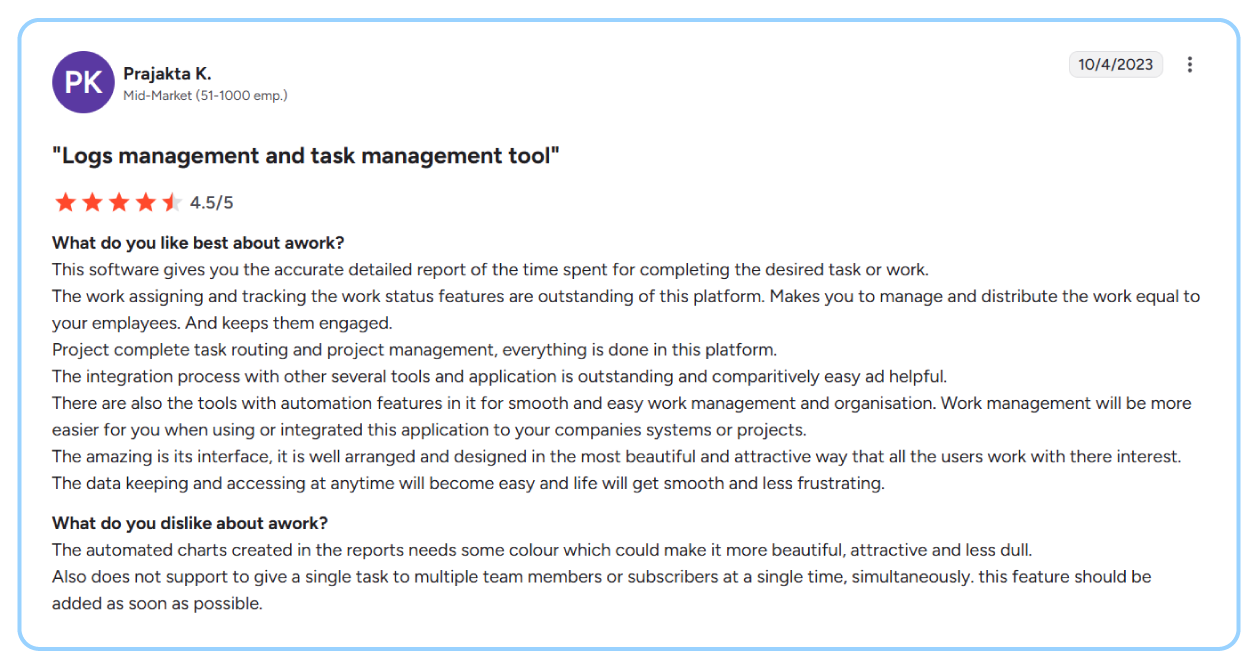
Awork approaches task management with maximum structure.
Every task comes with layers of fields, story points, estimates, dependencies, tags, priorities, detailed timelines, Gantt charts, and multiple views to configure.
It’s powerful, but the maintenance is constant.
As the workspace grows, the system demands more discipline and more time just to keep everything accurate. Teams often end up managing Awork as much as their actual work.
5day.io
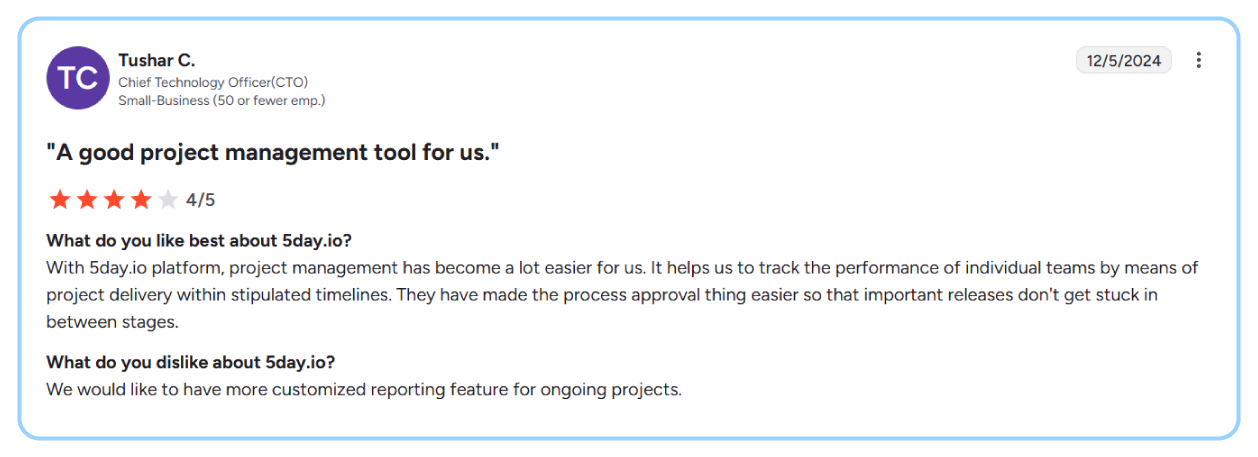
5day.io takes a different path.
It keeps everything inside a task. Discussion, files, progress, history, subtasks, dependencies, custom fields, all live in it without overwhelming the user.
The interface stays clean, and advanced options surface only when you need them with a Minimal Mode. With this, even traditionally heavy elements like subtasks and dependencies feel lightweight and fast.
This is the core difference:
In Awork, planning depth can easily turn into over-planning. When priorities shift, as they do in marketing environments, the system needs constant re-work. 5day.io avoids that drag. It gives you enough structure to stay organized but removes the overhead that slows teams down.
Automations, recurring tasks, custom types, and rich fields exist, but they blend seamlessly into the workflow instead of adding administrative load.
Workflow and approvals: Formality vs. fluidity
Awork
Awork treats approvals like a sequence of formal checkpoints. Each stage sits inside a predefined lane, and every handoff follows a fixed route. It’s predictable, structured, and reassuring in environments where procedures matter.
But when you drop this into creative or fast-moving teams, the structure starts working against you. One outdated step in the chain means the entire approval path pauses. A missing assignment, a misaligned automation, or a stale workflow is enough to stall forward motion.
The project waits for the system to catch up.
For example, A designer finishes a banner and marks the task as “ready for review.”
But the workflow says the task MUST go to:
- Copy review
- Brand review
- Client approval
The designer already uploaded the file. The copy reviewer approves it quickly.
But the brand reviewer is on leave, and because they’re locked into that workflow step, the task can’t move forward. The system literally won’t let anyone skip or reassign that step without editing the workflow first.
So the project sits there, not because the team is slow, but because the workflow is strict. In Awork environment, approvals behave like official gates: the work stops until the gate opens.
5day.io
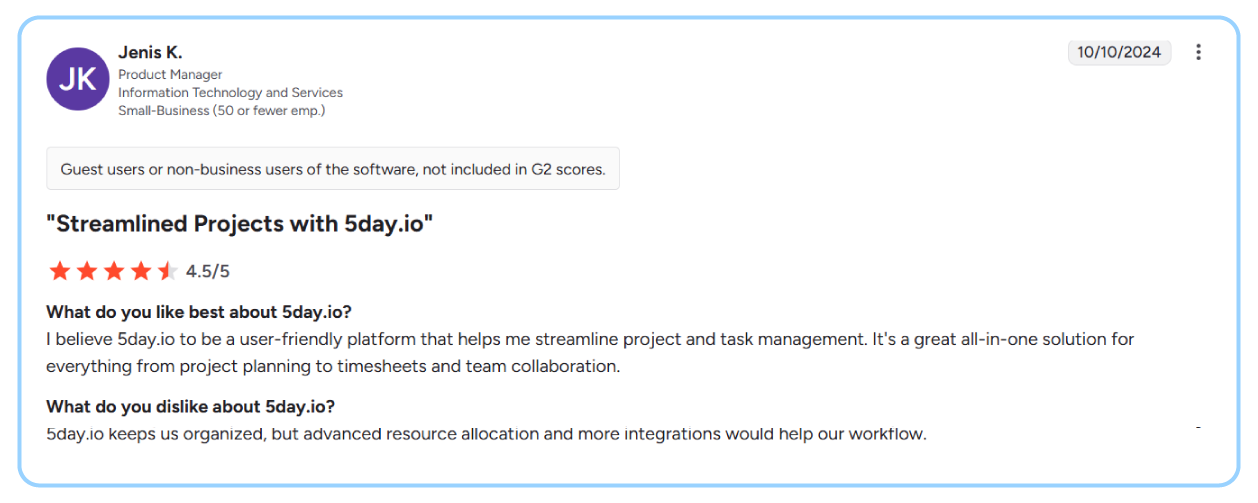
In 5day.io, approvals happen inside the task itself.
Imagine a designer uploads a new campaign visual. She doesn’t push the task into a fixed review pipeline or trigger a workflow stage. She simply types, “@Arjun — updated the hero banner. Need your approval.”
Arjun opens the same task, sees the file, and drops a quick comment: “Looks good. Please darken the background slightly.” The designer makes the tweak on the same file and replies, “Updated!” Everything, right from feedback, revisions, and files, sits in one linear thread that’s easy to follow.
Arjun reacts with a thumbs-up to confirm he’s good with the update. That’s the approval.
No workflow rules to unlock, or blockers because someone is away or a stage wasn’t configured properly. The task owner simply updates the status, and the project moves forward immediately.
Project planning: Overplanning vs. Agile focus
Awork
Awork approaches planning like a classic project-management textbook brought to life. When the plan is fresh, everything looks beautifully orchestrated, every task has a place, and every phase has a date.
The moment one part of the project shifts, the entire timeline absorbs the shock. And in a tool like Awork, that shock spreads everywhere.
Instead of helping you regain control, the marketing industry project management software demands more from you in terms of re-sequencing, re-estimating, re-aligning dashboards, and re-checking dependencies. Awork’s strength becomes its friction. When work is dynamic, Awork stays rigid, and the more fluid your project becomes, the heavier the tool feels.
5day.io
Where Awork tries to predict the entire project plan and path upfront, 5day.io assumes the path will shift, and builds the planning model around that truth.
Instead of forcing every task into a fixed timeline with rigid dependencies, 5day.io keeps planning lightweight and responsive. Timelines, dependencies, and milestones exist, yes. But, they behave more like guideposts that are helpful and adjustable without effort.
5day.io keeps planning flexible, so you spend time doing the work and not maintaining the plan.
Time Tracking: Micromanagement vs. Autonomy
Awork
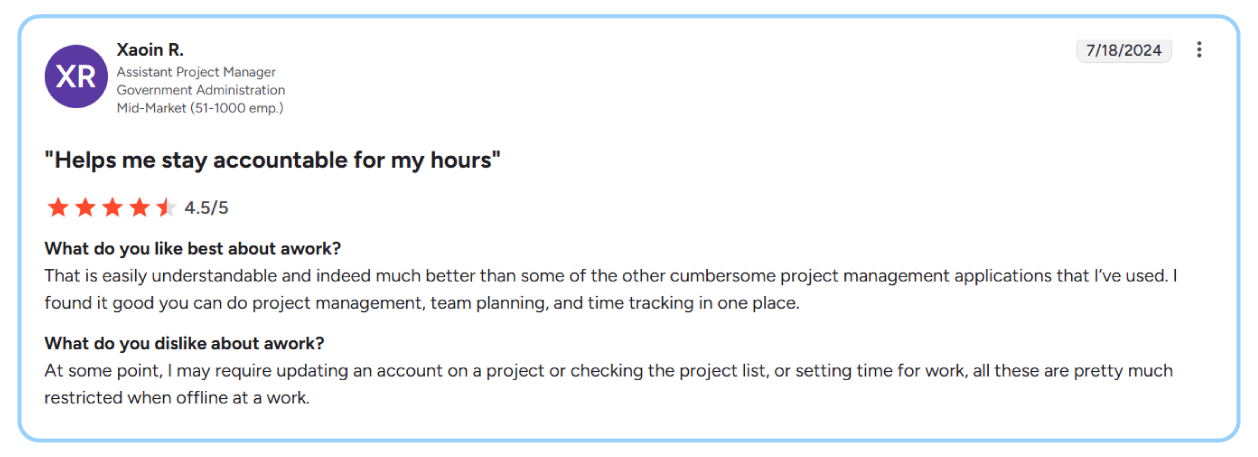
Awork embraces the full traditional model. You get structured timesheets, approvals, overtime fields, estimated vs. actual hours, and detailed reports for billing and capacity planning. It treats time like a financial asset and keeps it trackable and audit-ready.
This works well in high-accountability, billable environments.
But people behave like they’re being watched, even when they aren’t.
And the administrative overhead is real, too. You’ll have to keep an eye on your log hours, edit entries, submit, approve, reject, re-submit, and reconcile. Managers spend more time reviewing sheets than reviewing work.
5day.io
In 5day.io, you don’t fill a separate timesheet, switch to another screen, or maintain a second record of your effort. Tasks themselves are the source of truth.
You log time directly where the work is happening, with one click, one entry, done.
By stripping away the administrative overhead, 5day.io removes the cultural burden time tracking usually creates.
Read Also: Guide to project time tracking for agencies
Managers feel the difference, too. Instead of combing through timesheets, recalculating hours, or chasing missing entries, they simply open the project and see the work and the time side by side.
Nature of integrations
Awork
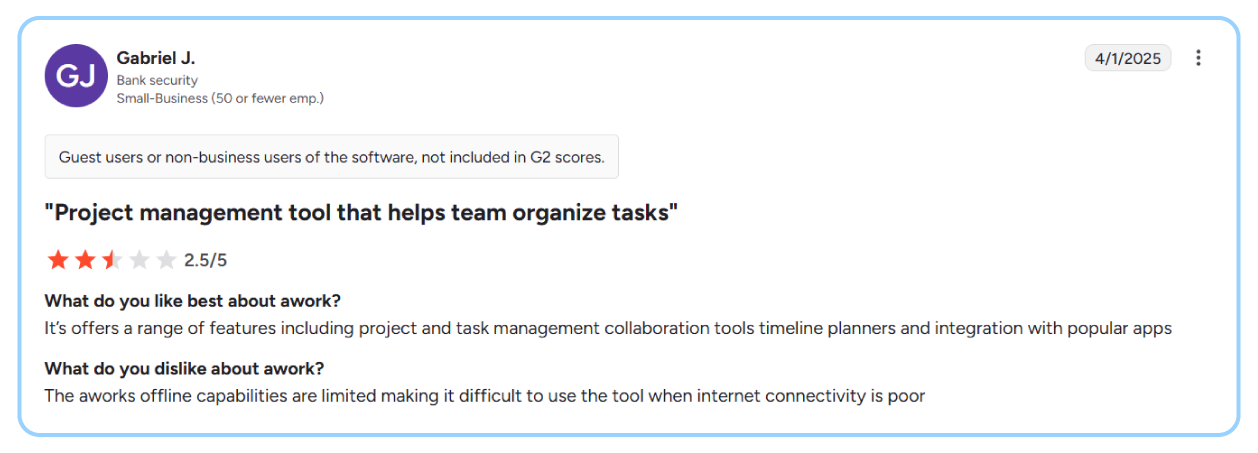
Awork offers powerful integrations, but that power comes with layers of setup, and ongoing monitoring.
Every connection you add introduces decisions, triggers, and sync logic that someone on the team eventually has to own. On paper, Awork connects to all the same tools as 5day.io, Slack, Teams, GitHub, calendars, cloud storage, yet the lived experience feels heavier.
Awork exposes deep automation options that appeal to technical users, but for most teams, that depth becomes overwhelming and sometimes the integrated tools behave unexpectedly. The catalogue itself is huge, impressive even, but sprawling enough that not all integrations feel essential.
5day.io
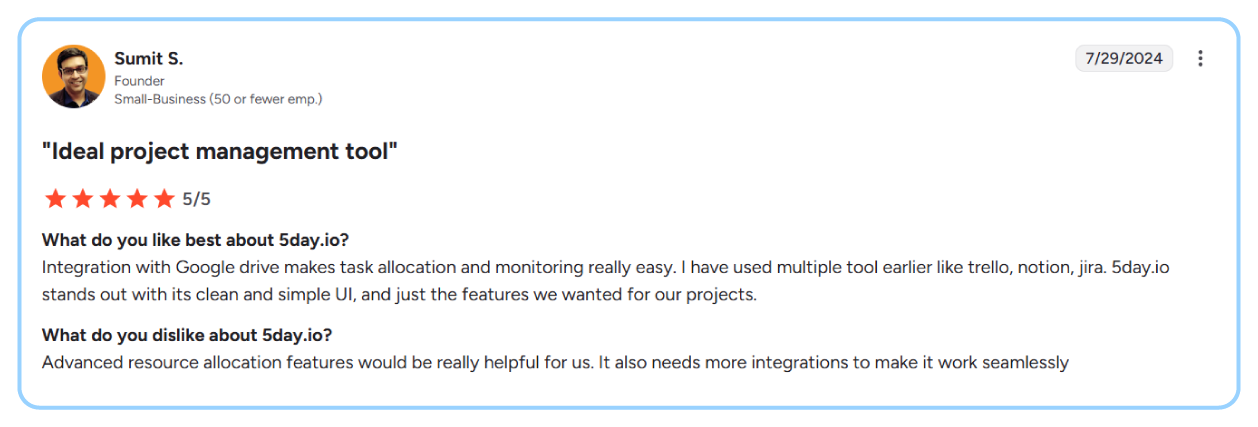
5day.io takes a completely different path.
It integrates with almost all the same tools as Awork but there’s a key difference.
Because the system prioritizes simplicity, integrations work right out of the box. No digging through a maze of automation triggers. And the biggest relief? They require almost zero maintenance. There’s no need for an “integration person,” because nothing is designed to create that kind of overhead in the first place.
Where Awork’s depth can feel intimidating, 5day.io keeps things stable and predictable.
The endpoints are the same, but the way they behave is different and reliably consistent.
In the end, 5day.io proves that two tools can list the same integrations and still offer completely different experiences.
User experience and ease of use: The real meaning of intuitive project management for marketing
Awork
Awork is the kind of workspace that dazzles in a demo with its clean lines, polished views, and the unmistakable appeal of a tool built with care.
But once you move past the surface, the layers begin to show.
Behind the beauty sits a deep stack of features, settings, workflows, and configuration options that demand time to learn and discipline to maintain.
It’s intuitive in the way a luxury car is intuitive: elegant and powerful, but not something you hand to someone without an orientation. They need to remember where things live and how each view behaves. And for many, especially those already fatigued by heavy project tools, the cognitive load returns quickly.
5day.io
Where Awork asks you to learn its language, 5day.io meets you in yours.
You open it, and it behaves exactly the way you expect, because it’s designed around how teams naturally think, not how traditional project management frameworks operate.
5day.io doesn’t require a steep onboarding process. Teams don’t need walkthroughs or training sessions or mental maps. They simply start, with guided templates and features on face-value. Because the tool assumes the user shouldn’t have to adapt to the system.
The simplicity comes from intentional design. Everything you need is visible, and everything that complicates your day is gone.
If Awork is intuitive after you learn it, 5day.io is intuitive because you don’t have to.
Why choose 5day.io over Awork for your marketing team
- 5day.io moves at the speed of marketing. Creative direction evolves mid-sprint. 5day.io bends with you instantly, no reconfiguring needed.
- Creative people love it because it removes the drag. The tool fades into the background, the way it should.
- Freelancers, clients, and stakeholders onboard themselves. They open 5day.io and simply get it. That ease creates smoother collaboration and faster delivery.
- It keeps chaos organized without becoming a burden. The system stays clean because it’s designed to prevent chaos from forming in the first place.
- The tool adjusts when priorities explode. 5day.io adapts instantly without you needing to rearrange an entire structure.
- It amplifies momentum instead of managing it. Teams using 5day.io don’t talk about the tool, they talk about the work, and that’s the biggest sign that a system is doing its job.
Conclusion
Every team has its own rhythm. Some move best when every detail is mapped, every dependency lined up, and every phase meticulously defined.
For those teams, Awork offers a beautiful, structured environment where order becomes the anchor.
But marketing teams work differently.
They breathe better when the tool stays out of their way and when context is never lost. These are the teams that don’t want to manage their project management system; they want it to quietly support them while they move.



